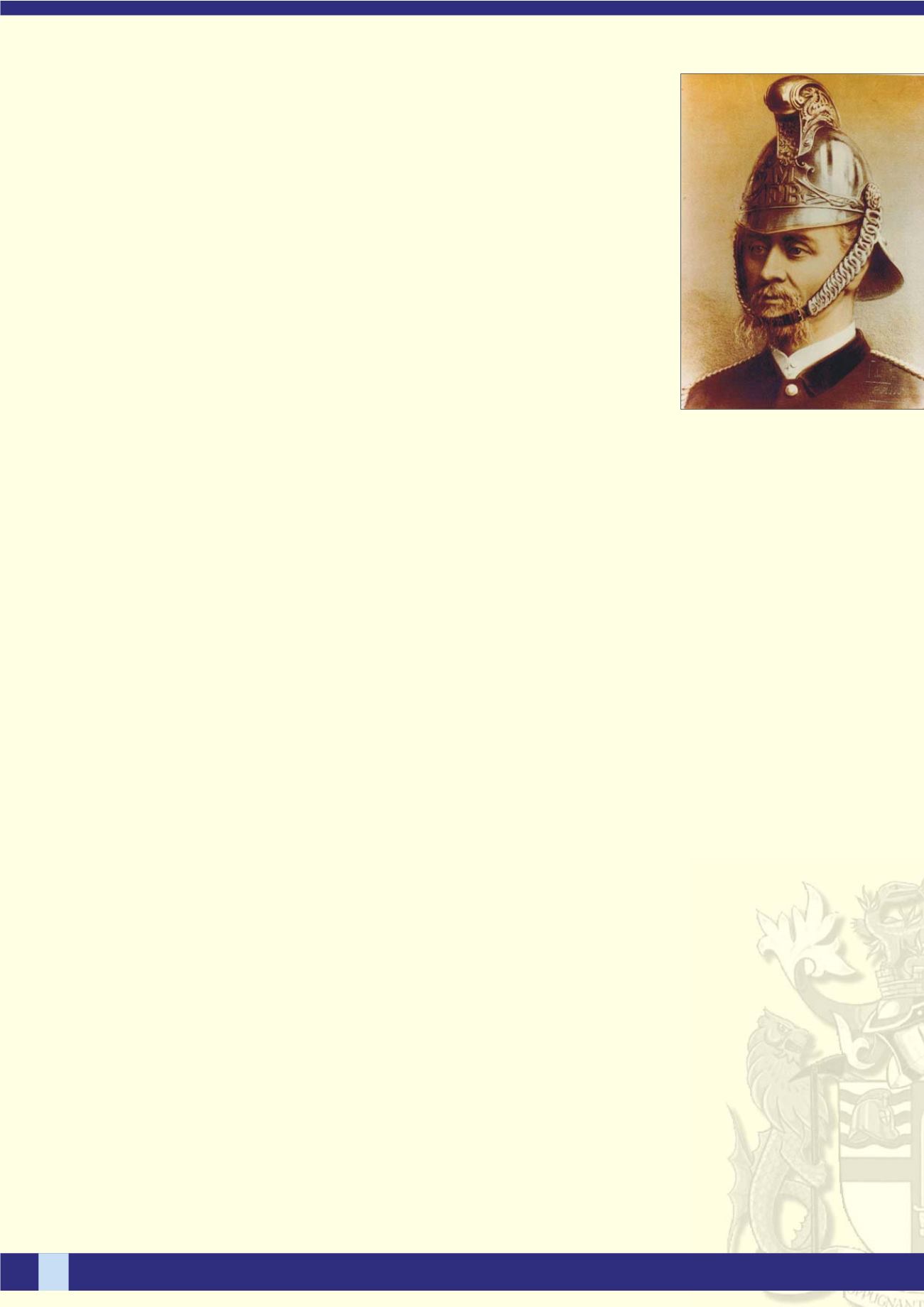

4
DINNER AT
LLOYD'S OF
LONDON
Geoff Morgan
The
tours
ended
in
“The Room”,
the
trading
floor where
underwriting
is
carried out. Brokers
meet
the
specialist
underwriters
here
at
their
“boxes”,
a
reflection back
to
the booths of
the
original Lloyd’s Coffee House.
If
the
underwriter
agrees
to
accept
the particular
insurance
risk,
he
stamps
the
slip with
his mark,
states
the
percentage
he
is
accepting
and
signs
under,
hence
the
term
“underwriter”. Cover
normally
starts
immediately.
60
Freemen,
Liverymen
and
Also
in
“The Room”
is
situated
the
famous Lutine
guests met on Monday 23rd
Bell. Originally
a
French
frigate, La Lutine was
January
to
attend
the
first
commandeered
in 1793 by British
forces.
Renamed HMS Lutine
she
sank
carrying
a
cargo
Company Dinner of 2006 which
of
gold
and
silver bullion off
the Dutch
coast. The
cargo
valued
at £1m,
a
fabulous
amount
in
those
was
held
at
Lloyd's of
London
days, was
insured
at Lloyd’s who paid
the
claim
in
Formed
in 1668, Lloyd’s
is
the world’s
leading
full
and
then
set
about
salvaging
the wreck.
The
insurance market which
is
now
housed
in
an
ship’s bell was
recovered
and
hung
in
the
award-winning building designed by Lord Richard
Underwriting Room where,
traditionally,
it was
Rodgers
and opened
in 1986
at No 1, Lime
rung
to
herald
important
announcements
to
Street
in
the City of London. However,
the
brokers
and
underwriters
– once
for
sorrow,
origins of Lloyd’s
lie
in
the more modest
twice
for
joy.
It
is
now only
used on
ceremonial
surroundings of Mr Edward Lloyd’s 17th
century
occasions.
coffee
house
in Tower
Street.
Dinner was
champagne pate
and
toasted brioche,
Little
is
known
about Edward Lloyd or
his
coffee
followed by poached
supreme of
salmon on
house. Coffee
houses
in
those days before
crushed
artichokes, baby
spinach
and broad
newspapers, were places where people met
and
beans with
a
chocolate
and pistachio parfait
exchanged
the
latest
gossip. Lloyd’s Coffee
dessert.
It was
served
in
the Old Library which
is
House, over
and
above
its
rivals,
gained
an
lined with
the original oak panels
from
the 1928
enviable
reputation
for
trustworthy
shipping
Lloyd’s Building
incorporating
hand-carvings of
news where merchants
and
seafarers were
to be
17th
and 18th
century
sailing
ships
and
contains
found
and
it became
the
recognised place
to
splendid oil paintings of
naval
scenes.
obtain marine
insurance.
It
is
understood
that
The Master, Alan Wells welcomed members
and
Edward Lloyd
took
no part
in
underwriting, but
guests
to
the Company’s
Special Dinner
and
merely
ran
the
coffee
house
until
his death
in
thanked Court Assistant Geoff Morgan
for
1713. His bequest
to posterity was
to
give
his
making
it possible
to
visit
such
an
interesting City
name
to
the
insurance market
now
renowned
landmark
and
the Clerk, Martin Bonham
for
throughout
the world.
organising
the
event
so
successfully.
Members
and
their
guests were
taken on
tours of
the building
to
see
the Nelson Collection,
a
unique
collection of
naval
artefacts dating back
more
than 200
years
to Admiral Lord Nelson’s
famous
victories
at Trafalgar, Copenhagen
and
the Nile. The
groups
visited
the Adam Room,
which was originally
the dining
room of Bowood
House
in Wiltshire, built
in 1763 by
the
Scottish
architect Robert Adam. The whole
room was
taken
apart,
transported
to London
and put
together
again piece by piece
to
form
the
Council Chamber
in
the
former Lloyd’s Building
opened
in 1958. When
the
current Lloyd’s
Building was
constructed
in 1986 on
the opposite
side of Lime
Street,
the
room was
taken
apart
again
and
reformed on
the 11th
floor
–
a
classical
antique
in
a post-modern building.
Captain
Sir Eyre Massey
Shaw, KCB,
first Chief Officer of
the Metropolitan
Fire Brigade, 1866
- 1891, pictured
in
his
silver
fire
helmet. The MFB was
re-titled
the London
Fire Brigade
in
1904.
(Editor's
collection)
















